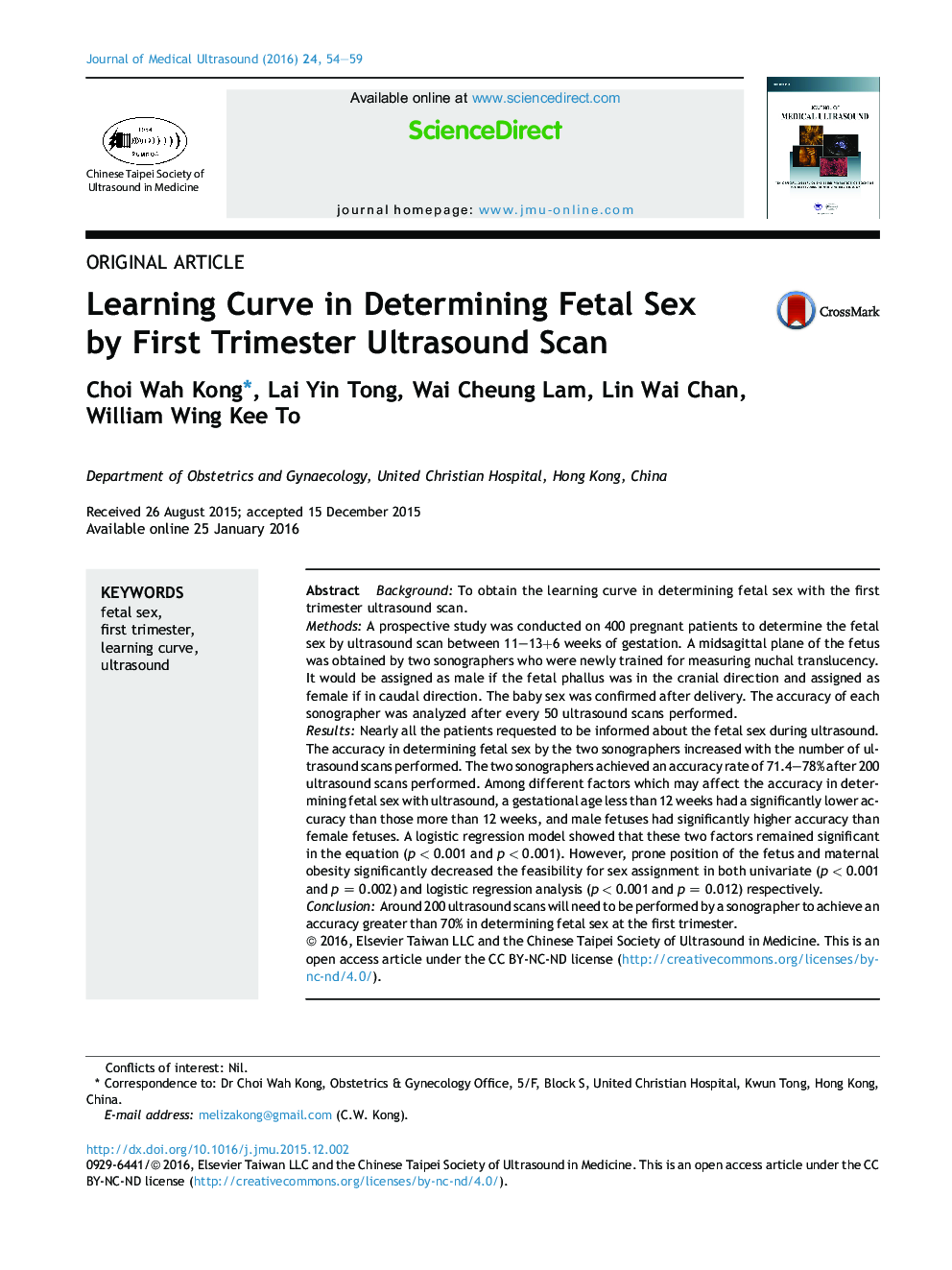| Article ID | Journal | Published Year | Pages | File Type |
|---|---|---|---|---|
| 4232906 | Journal of Medical Ultrasound | 2016 | 6 Pages |
BackgroundTo obtain the learning curve in determining fetal sex with the first trimester ultrasound scan.MethodsA prospective study was conducted on 400 pregnant patients to determine the fetal sex by ultrasound scan between 11–13+6 weeks of gestation. A midsagittal plane of the fetus was obtained by two sonographers who were newly trained for measuring nuchal translucency. It would be assigned as male if the fetal phallus was in the cranial direction and assigned as female if in caudal direction. The baby sex was confirmed after delivery. The accuracy of each sonographer was analyzed after every 50 ultrasound scans performed.ResultsNearly all the patients requested to be informed about the fetal sex during ultrasound. The accuracy in determining fetal sex by the two sonographers increased with the number of ultrasound scans performed. The two sonographers achieved an accuracy rate of 71.4–78% after 200 ultrasound scans performed. Among different factors which may affect the accuracy in determining fetal sex with ultrasound, a gestational age less than 12 weeks had a significantly lower accuracy than those more than 12 weeks, and male fetuses had significantly higher accuracy than female fetuses. A logistic regression model showed that these two factors remained significant in the equation (p < 0.001 and p < 0.001). However, prone position of the fetus and maternal obesity significantly decreased the feasibility for sex assignment in both univariate (p < 0.001 and p = 0.002) and logistic regression analysis (p < 0.001 and p = 0.012) respectively.ConclusionAround 200 ultrasound scans will need to be performed by a sonographer to achieve an accuracy greater than 70% in determining fetal sex at the first trimester.
